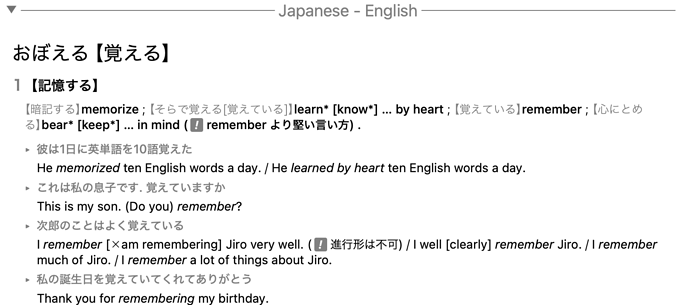The quality is decent, and it’s nice that it’s available pretty much everywhere where there is selectable text. But the content is still made for Japanese speakers, so it’s not always ideal for learners.
I meant to mention it before, but if you’re using Safari a lot then the Safari extension 10ten reader might be useful. It’s a Japanese-English dictionary that’s even more convenient because you only have to mouse over a word. And it does have information like 一段/五段 and transitive/intransitive.
It doesn’t really map that well to the way conjugations are usually taught to people learning Japanese as a foreign language, but I guess the row of the last kana of the ない-stem of the verb?
(In Japanese school grammar, the stem and the inflected ending are split up differently, and it makes slightly more sense to classify words by the row of the first mora of the inflected ending. But even then, e.g. classifying verbs ending in う as わ-row is basically historically grown nonsense at this point.)



 at the top you can see the pitch accent pattern.
at the top you can see the pitch accent pattern.